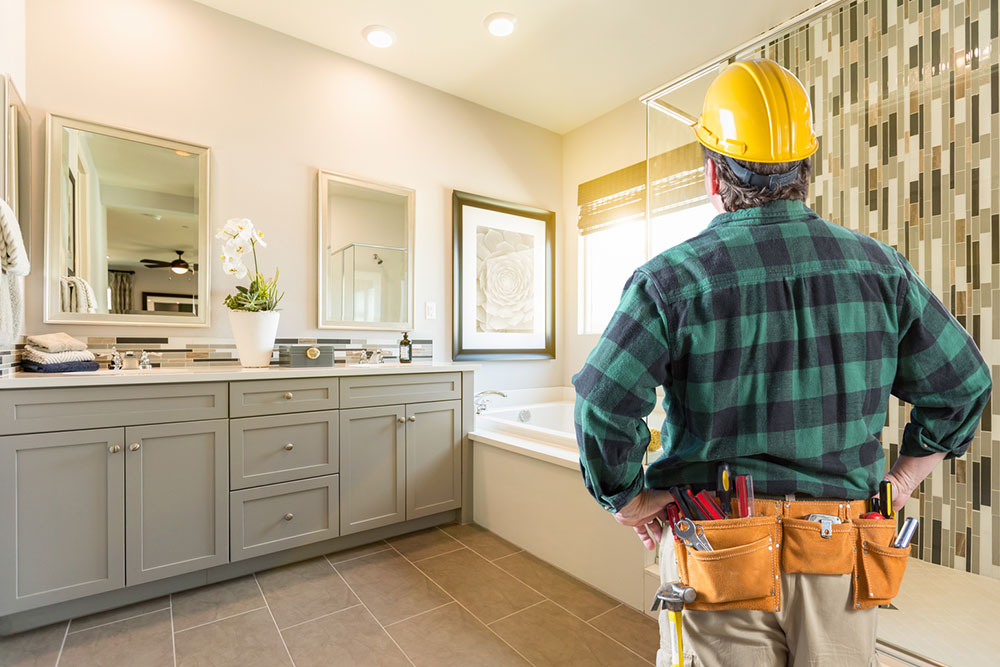10 common bathroom remodeling mistakes to avoid

Bathrooms undergo constant usage that leads to wear and tear, unpleasant odors, worn-out floors and fittings, and plumbing problems. So renovation can help address these issues and give the bathroom a facelift. It can also add value to the house, ensure safety, and improve energy efficiency. But often, certain mistakes can hinder the renovation work and cost dearly in the long run. Understanding how to avoid these errors can help one prevent such unwanted expenses.
1. Not planning in detail
Remodeling a bathroom requires meticulous planning of various aspects. It doesn’t just end with the layout or the overall look and feel of the space. One must factor in plumbing, electrical work, flooring, surface materials, ventilation, and storage. Whether it is a commercial or residential bathroom renovation, one should also try to find alternative arrangements. Failing to plan and chalk out a detailed layout can end up causing delays in completing the project, budget overruns, and dissatisfaction with the final result.
2. Using unsuitable material
Each material serves a different purpose and requires special care. Not understanding these factors can cause damage. For example, texturing the floor tiles can lead to limescale building up. Therefore, one should be mindful of the materials used in the process. It’s best to use porcelain and ceramic for countertops and walls since they are water-resistant and strong. Similarly, it’s best to have anti-slip tiles to prevent falls.
3. Trying to DIY the whole project
Professional companies focusing on remodeling tend to look at the overall functionality and aesthetics while taking up any project. They not only focus on the layout and design work but also know the relevant building codes and how to comply with them. Not only that, they also know what common problems people may run into during renovations and common sources of disappointment. DIYers are often unaware of these nuances, like some paints block ventilation while some adhesives may not bond properly to certain surfaces. So, it’s best to consult a professional, especially if one’s a newbie.
4. Not factoring in budget overruns
When it comes to renovation, especially bathrooms, people may tend to underestimate the costs. Before budgeting, it’s important to consider all expenses, like materials and labor. It’s best to plan for the highest possible cost and then find ways to save money. But one is advised not to skimp over important structural and plumbing work or use low-quality material to cut costs or one may end up creating more issues for the future like leakages.
5. Trying to get all the latest gadgets
The market is constantly flooded with the newest bathroom gadgets, from high-tech shower heads to smart mirrors, storage and organizing solutions, and more. However, one should be mindful when selecting items for their post-renovation bathroom. Not all gadgets may be functional, and not all may fit the space. Basic remodeling also requires sufficient funds, so it’s best to prioritize essentials like major fixtures and tiling and invest in quality for a durable outcome. Having said that, not all gadgets and innovations may be necessary, and some may enhance both functionality and aesthetics. So the advice here is to simply choose wisely.
6. Changing major water or electric connections
Another mistake people tend to make during bathroom remodeling is visualizing an entirely different space and attempting to change the location of the tub, toilet, or sink. It can lead to disastrous outcomes. Firstly, the plumbing, water, waste systems, and electrical work all function in tandem with the community infrastructure. The connections are already established, and making changes here can cause structural damage and even lead to accidents. Unless there’s a leakage, plumbing, or electric problem, it’s best to leave these outlets in their designated place and redesign the space around them.
7. Tiling the wrong way
Those attempting to DIY the bathroom remodeling should also approach the tiling work in the proper way. While it may seem straightforward, one should start the tiling at the center and slowly work their way towards the walls. This approach keeps the tiles uniform and aligned. Rushing this process, starting randomly, or not preparing the ground beforehand can lead to cracking of tiles later on.
8. Forgetting about ventilation
A bathroom is a commonplace where moisture, odors, and airborne pollutants get trapped. So, adequate ventilation is a must since it prevents mold formation and eliminates odor and bacterial growth. Ensure that the space maximizes its ventilation capacity. Ventilation is especially a must for those who have wallpapers since the trapped moisture can peel them off.
9. Not using multiple layered lights
Just one light over the bathroom mirror can result in inadequate lighting. It not only fails to create the proper ambiance but also falls short of meeting the usual lighting demands of the space. Regardless of the bathroom’s size, experts recommend layering the lighting for optimal illumination. This can be achieved by incorporating various light sources such as overhead fixtures, vanity lights, and accent lighting.
10. Cramming the space
The main thing to remember during bathroom remodeling is the comfort of the user. There’s no point in installing a big luxurious washbasin, a fancy rainfall showerhead, or an extensive vanity space if it affects the functionality and comfort and restricts one’s movement around the space. Cramming a bathroom space with too many features is a complete no-no.